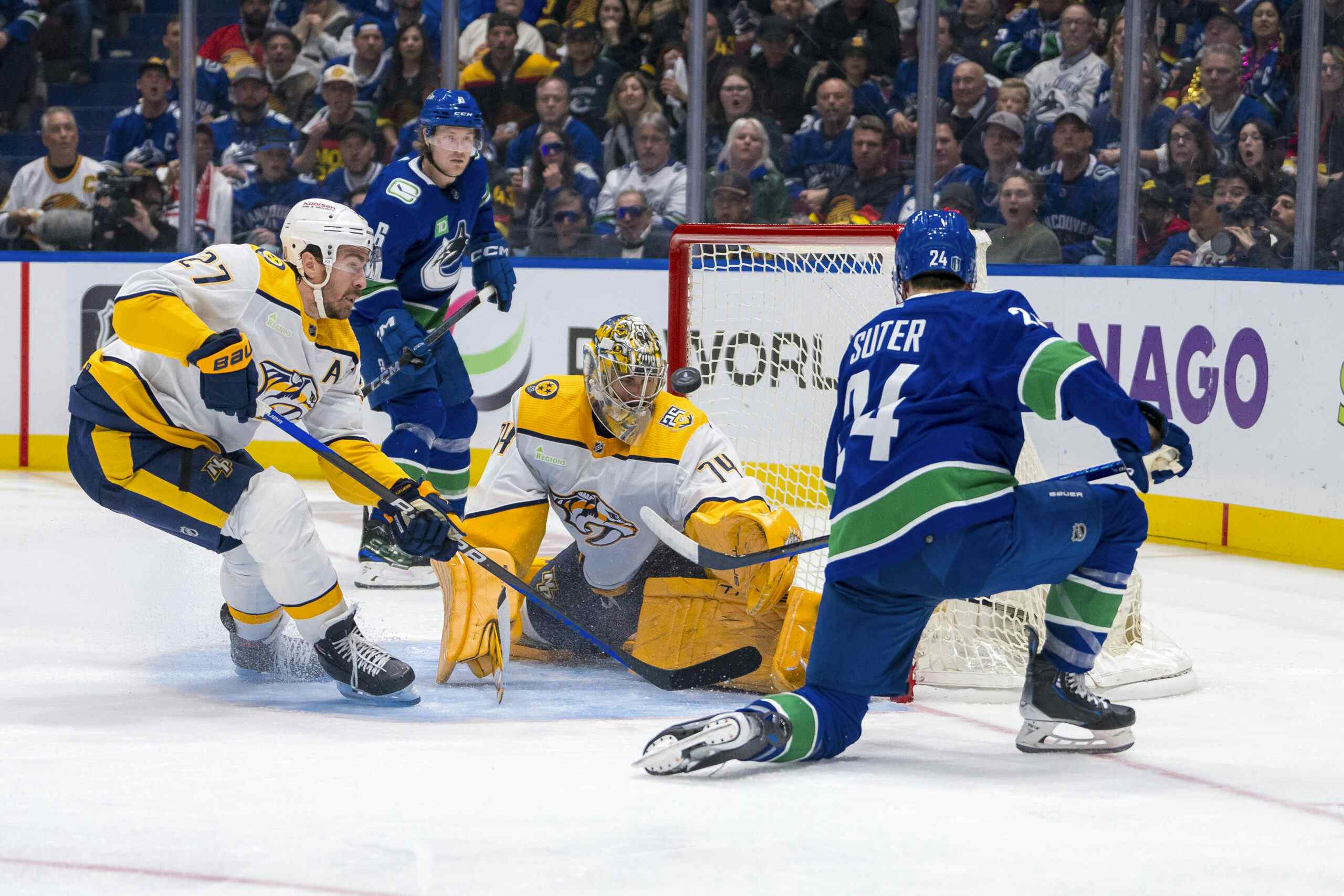Troy Stecher Was One of The Best Penalty Killing Defensemen in the NHL
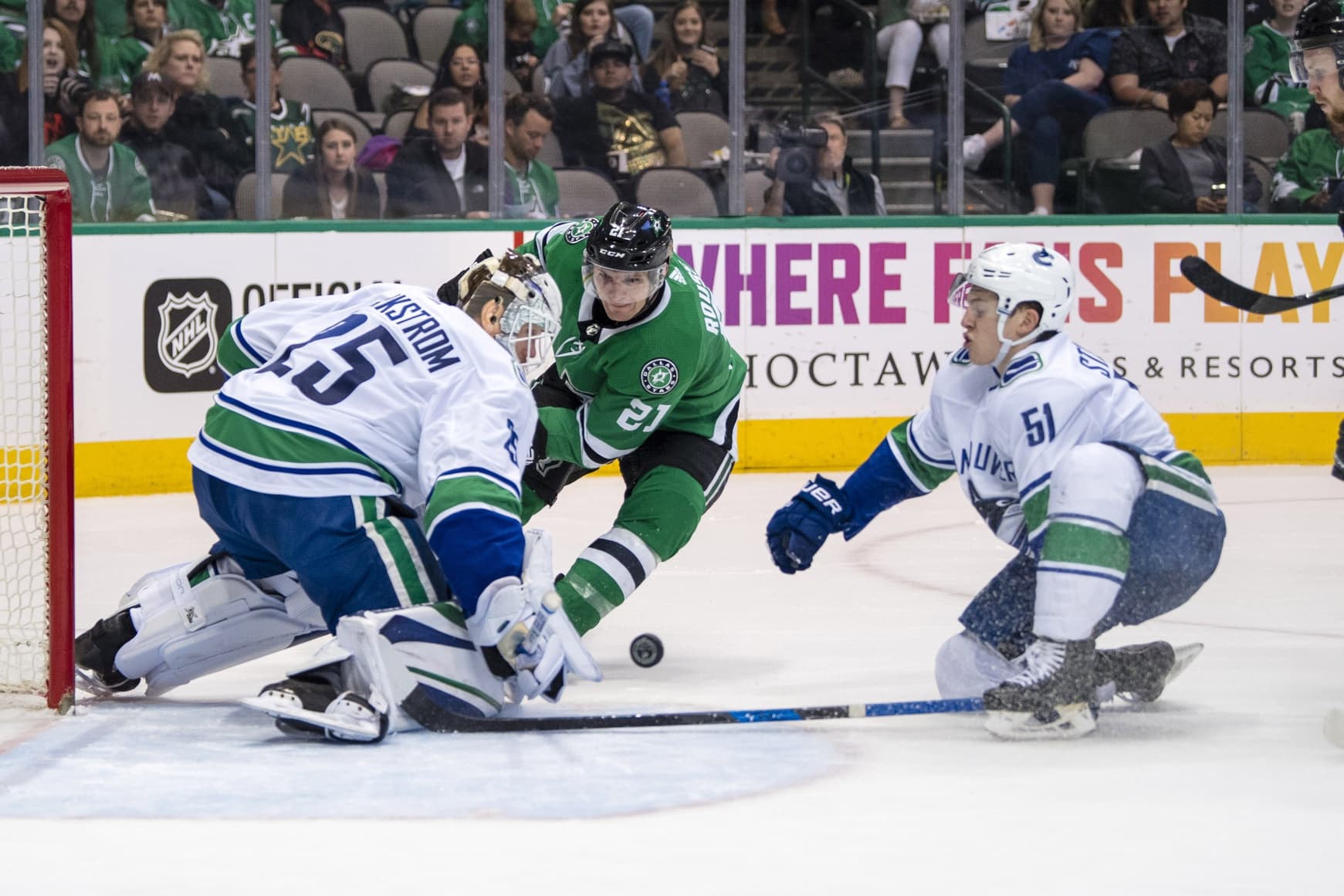
By Harman Dayal
5 years agoPicture a prototypical penalty killing defenceman, and I’m sure a burly defensive blueliner like Roman Polak or Erik Gudbranson comes to mind.
But in a league that’s putting a new premium on speed and skill, the disadvantages associated with small stature are becoming attenuated. One player who’s thrived in light of this paradigm shift is 5’10 defenceman, Troy Stecher.
The Richmond, BC native saw his deployment change drastically under new Canucks head coach Travis Green — watching his powerplay time plummet, while simultaneously receiving a significant increase in shorthanded minutes. The latter was undoubtedly due in part to injuries to right-handed defensemen Chris Tanev and the aforementioned Gudbranson, but there’s a strong argument to be made that Stecher outperformed both on the penalty kill this season.
In fact, you could go as far as to say that the 24-year-old was the Canucks’ best penalty killing defenceman period.
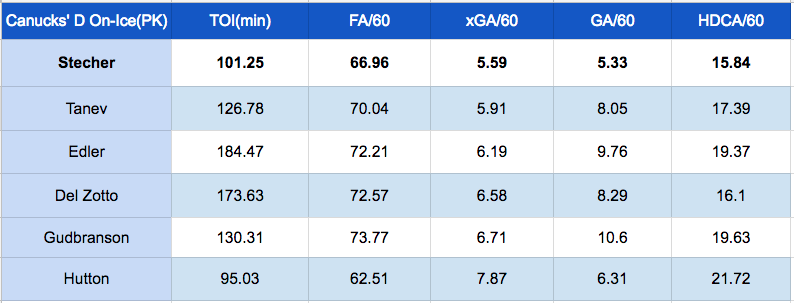
Stecher led Canucks’ defencemen when looking at goals against, high danger shot attempts against and expected goals against rates. His unblocked shot attempts against rate also slotted him second, behind only Ben Hutton. All this tells us that the Canucks excelled at suppressing shot attempts, high danger scoring chances, and goals when Stecher was on the ice shorthanded.
Particularly interesting when examining the data is the substantial margin between Stecher and Gudbranson’s underlying metrics in spite of the latter’s far superior reputation as a penalty killer.
One area where you might expect the undersized Stecher to struggle relative to a hulking defender like Gudbranson would be at clearing the crease and preventing shot attempts close to the goal mouth, though the numbers suggest he did just fine.
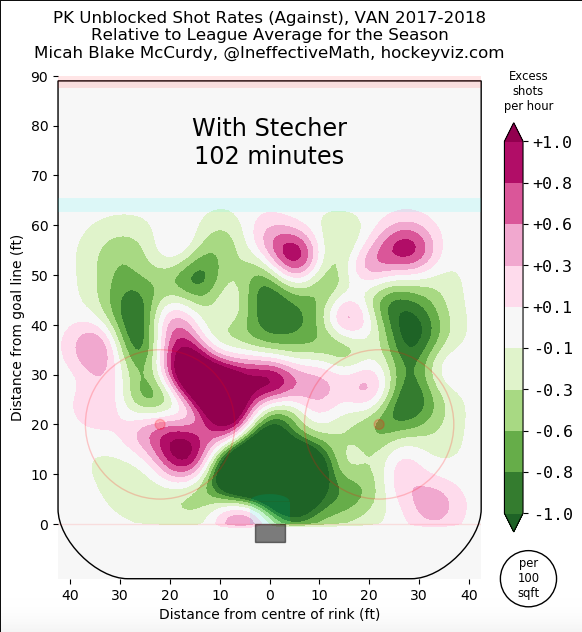

Not only are a lower proportion of shot attempts coming from the front of the net with Stecher deployed, but the right slot as a whole sees fewer attempts compared to the left side.
Stecher’s excellence isn’t just limited to his own team — his shorthanded performance shines just as bright when pitted against the rest of the league’s blueliners.

Stecher finished within the top-10 for every significant underlying metric this season among 119 defensemen that spent at least 100 mins TOI on the penalty kill.
This sounds all fine and dandy, but how is it that an undersized blueliner with unheralded defensive acumen was able to kill penalties at an elite level? Let’s turn to video to highlight some of Stecher’s defensive strengths.
Defending the Blueline
The biggest challenge for any power-play unit is getting set up in the offensive zone. Effective penalty killing teams are able to deny controlled zone entries by aggressively applying puck pressure and holding the blueline.
For this to work, penalty killers need to keep their feet moving, maintain tight gap control on the puck carrier, and use both their body and stick positioning to cut off skating and passing lanes. Fortunately, these attributes are among Stecher’s greatest strengths.
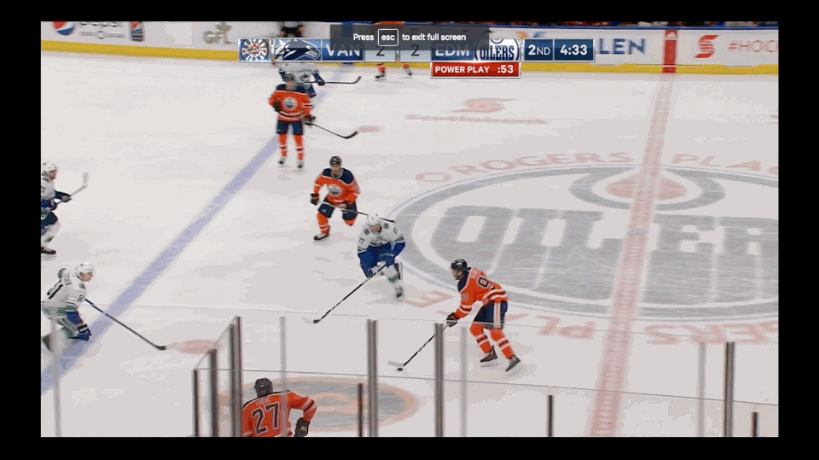
Stecher forces Connor McDavid to the outside by initially blocking the inside skating lane with his stick. With McDavid pushed to the outside lane, Stecher moves quick laterally to take space away from McDavid before rubbing him off the puck against the boards.
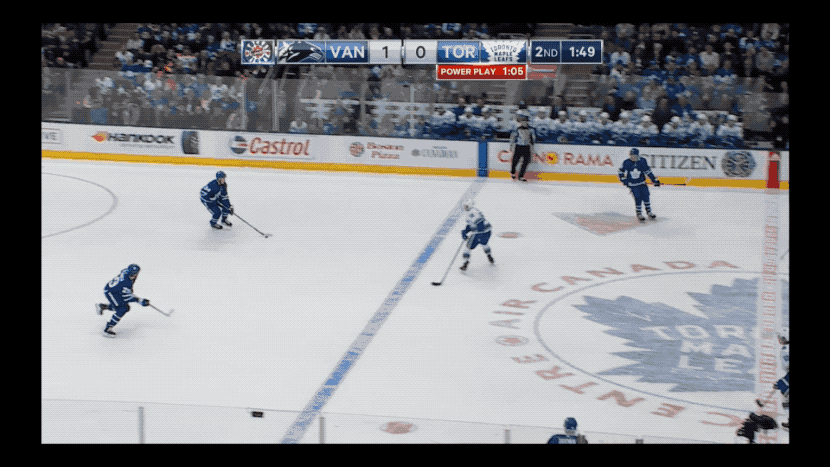
This play is all about getting into a sound defensive position at the blueline. It’s subtle, but Stecher does a good job of holding in an area where he can both intercept a pass to the wing, or challenge Auston Matthews if he tries to skate through the middle. Matthews opts for the pass and Stecher is right there to poke the puck away to create a turnover.

Not every rush attempt can be snuffed out at the blueline, but Stecher does a fine job of maintaining gap control here as Colin Wilson takes the outside lane. Stecher’s persistence causes him to eventually close all space and force Wilson to give up the puck.
The key in this instance is Stecher’s powerful strides while backpedalling to follow Wilson. Rewatch the clip and focus only on Stecher’s mobility and explosiveness with his first few steps.

Nathan MacKinnon dishes the puck to Gabriel Landeskog in the clip above to create a mini two-on-one on the outside. Stecher counters this with a good decision to protect the middle and check MacKinnon out of the play first, before attacking the puck to create a turnover.
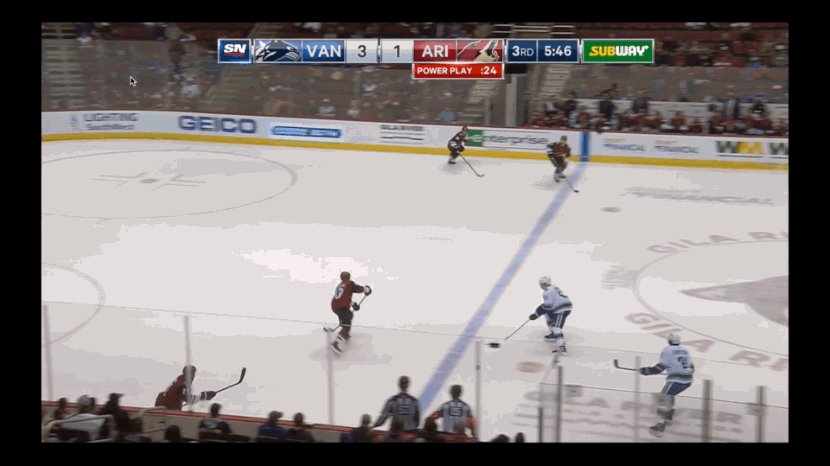
Focus on Stecher’s skating in the clip above and his explosive backpedalling is highlighted once more. Jakob Chychrun isn’t rushing the puck at top speed, so Stecher makes the aggressive move to wedge his body between Chychrun and the puck.
The key in these clips is Stecher’s ability to keep his feet moving fast enough to maintain gap control. He makes it look easy in the examples shown, but holding the line against players on the rush is more difficult than it seems.
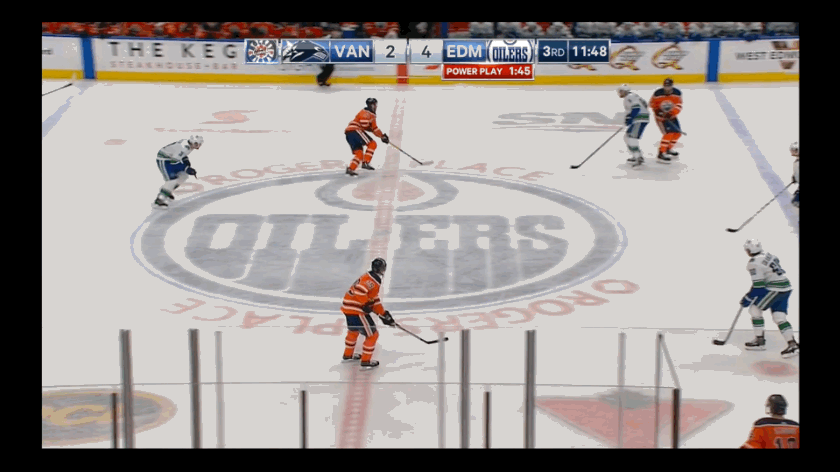
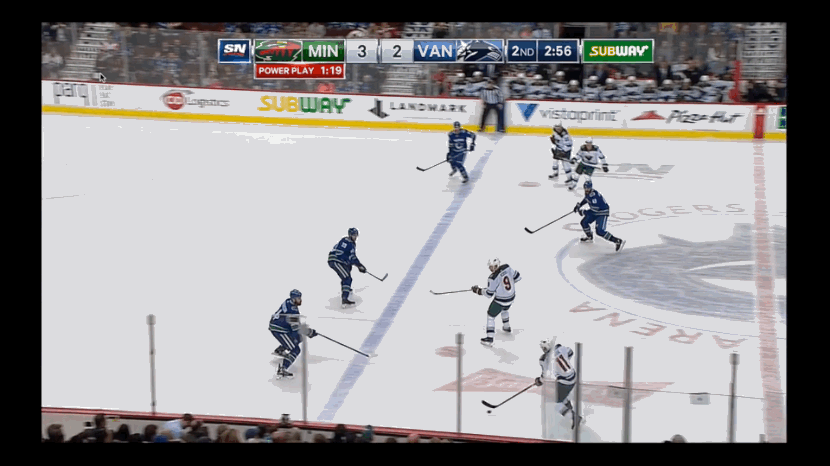
The first clip has Tanev caught flat-footed, while the second is an example of Gudbranson’s lack of mobility.
This isn’t a knock on Tanev or Gudbranson, but rather a testament to Stecher’s backwards skating and gap control.
Closing Time, Space, and Angles
There’s no question that Stecher is bound to have a physical disadvantage at defending when the opposing team has set up in the offensive zone. He overcomes this with excellent anticipation, and relentless competitiveness down low to take time, space and angles away.
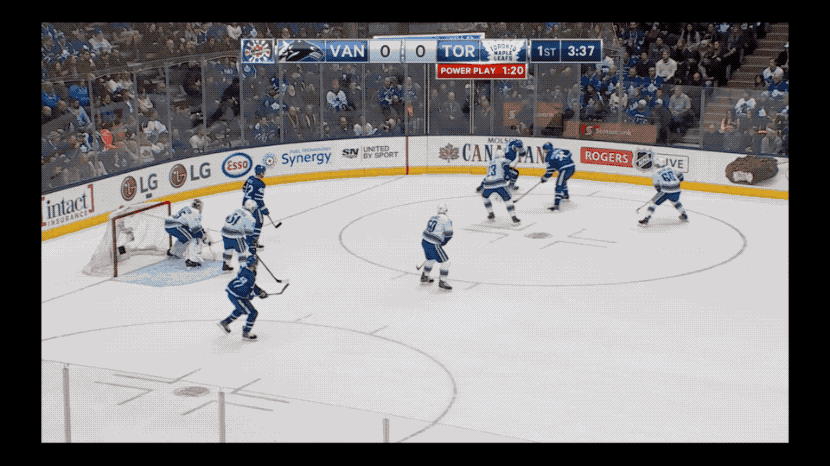
Here, Stecher is like a dog on a bone, denying Tyler Bozak of the space and angle necessary to make a pass to Nazem Kadri. Stecher leverages his stick well and gets a piece of the attempted pass, before fighting along the boards to dispossess both Bozak and Kadri.
Gap control is essential, but Stecher’s swift pivots and willingness to sacrifice the body are crucial for taking away shooting lanes. His proficiency in both regards is validated by the fact that he’s 28th highest among NHL defensemen for shot blocks per hour (minimum 100 minutes shorthanded).

In this clip, Stecher shifts fast laterally to block Justin Faulk’s first one-time attempt. From there, he stays tight on Elias Lindholm, using his stick to block multiple passing lanes, before diving in front of another one-time bomb. Most impressive about this is that Stecher was on the ice for the duration of the two-minute powerplay up until that point.

This may look like a straightforward play at first glance, but the angle of Stecher’s approach tells us that he anticipates the pass to Brendan Perlini very early. Stecher notices that Derek Stepan has the puck on his backhand and is, therefore, more likely to flip the puck to Perlini than he is to carry the puck down low. Because of that, Stecher takes a route between Stepan and Perlini instead of closing Stepan directly.
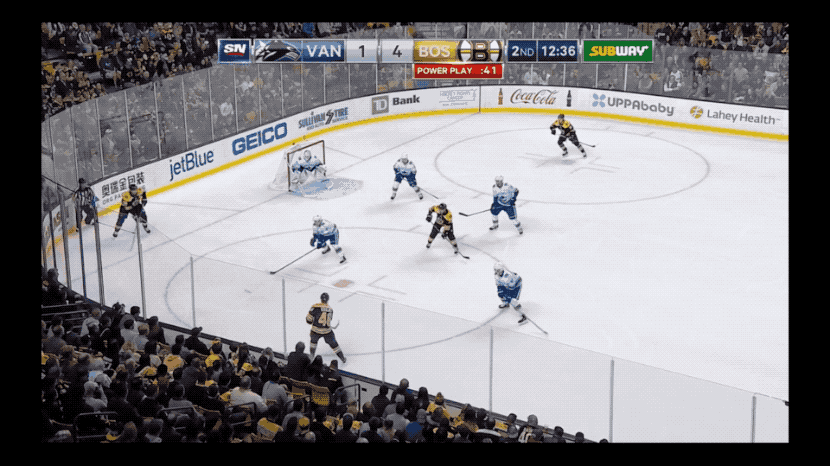
In this clip, both Stecher and Del Zotto poke the puck away from David Backes who tries to drive to the net. Stecher recovers well after falling– sprawling to get a piece to disrupt Backes’ pass to Brad Marchand. This sequence shows off Stecher’s edgework and speed once more.
Effective Clearing Attempts and Puck Management
The work a penalty killing unit does to gain possession is nullified if they’re unable to clear the puck, or worse yet if they give it away in a prime scoring position.
Stecher is patient when he picks up possession, only attempting a clear when he’s in a good position to do so.
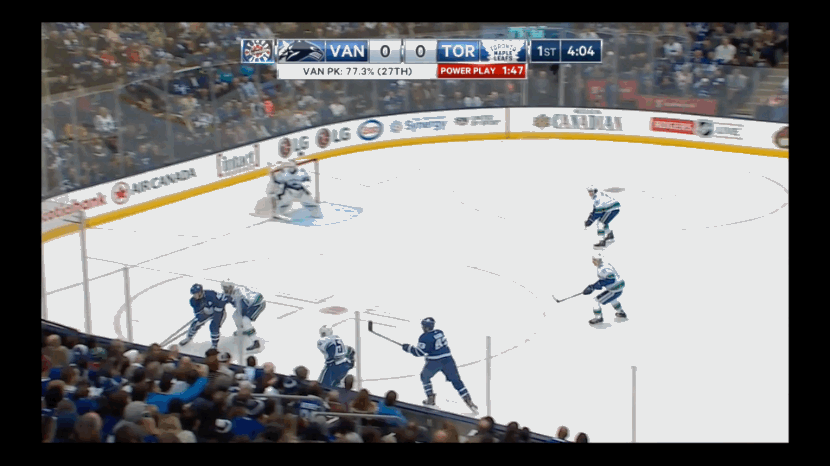

This contrasts someone like Gudbranson who tries hammering the puck the first chance he gets instead of skating to move to a more advantageous position.

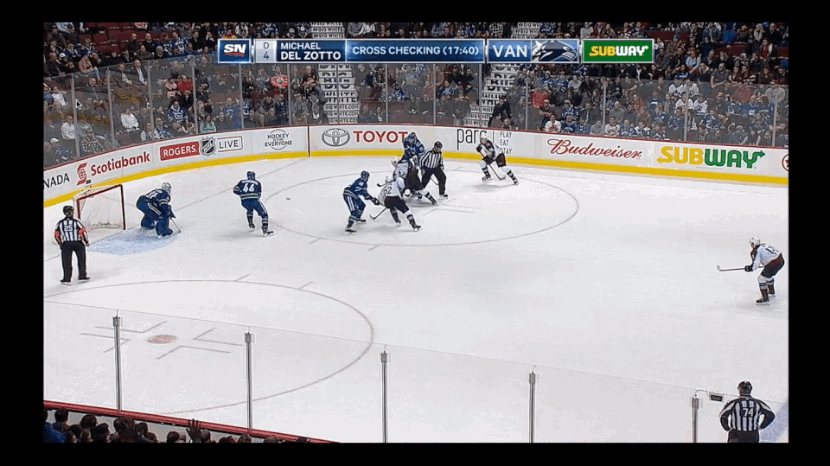
Unfortunately, there’s no data available to quantify each player’s clearing efficiency, although it is interesting to note that Stecher is one of just three defensemen in the NHL to have zero registered giveaways in at least 100 minutes of shorthanded TOI.
Conclusion
The Canucks killed penalties exceptionally well this season when Troy Stecher was on the ice. The 24-year-old’s excellent skating package, above average anticipation, and relentless competitiveness make him effective at defending the blueline, taking passing and shooting lanes away, and maintaining gap control.
If there’s one caveat, it’s that Stecher accomplished this largely against the opposing teams’ second units. By this token, it’s fair to wonder how Stecher’s play might hold up not only against stiffer competition but a larger sample size. Nevertheless, Stecher’s performance to date only serves to strengthen the argument that he’s earned some extra penalty killing opportunities for next season.
Recent articles from Harman Dayal



